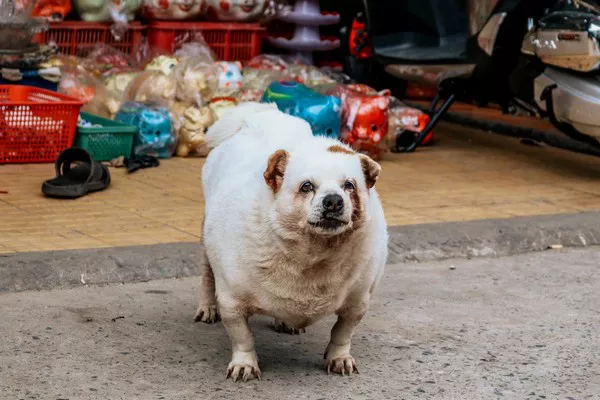Introduction to Ragdoll Cats
Ragdoll cats are known for their striking blue eyes, silky fur, and affectionate nature, making them a favorite among cat enthusiasts. Originating in the 1960s, this breed has quickly gained popularity due to its docile temperament and appealing aesthetics. In this article, we will delve into the costs associated with owning a Ragdoll cat, from the initial purchase to ongoing expenses and healthcare, providing a comprehensive financial overview for potential owners.
Brief History and Characteristics of the Breed
The Ragdoll breed was developed by Ann Baker, a breeder in California, in the early 1960s. Ragdolls are known for their semi-longhaired coats, vivid blue eyes, and color point patterns. Their unique trait of going limp when picked up, similar to a ragdoll, has contributed to their name and charm. Ragdolls are large cats, with males typically weighing between 15-20 pounds and females between 10-15 pounds. They are known for their friendly, laid-back personalities, making them excellent companions for families and individuals alike.
Reasons for Their Popularity and Demand
Ragdoll cats have surged in popularity due to several factors:
Temperament: They are known for their gentle, affectionate nature and are often described as “puppy-like” because they follow their owners around and enjoy being handled.
Appearance: Their striking blue eyes, plush coat, and color patterns make them visually appealing.
Adaptability: Ragdolls are well-suited to indoor living and can adapt to various household environments, including those with children and other pets.
Initial Costs
Price Range for Purchasing a Ragdoll Cat from Breeders
The cost of purchasing a Ragdoll cat can vary significantly depending on various factors. On average, you can expect to pay between $800 and $2,500 for a Ragdoll kitten from a reputable breeder. Show-quality cats or those with particularly desirable traits can cost upwards of $3,000.
Factors Affecting the Price
Several factors influence the price of a Ragdoll cat:
Pedigree: Cats with a strong pedigree, including those from award-winning lines, will command higher prices.
Color and Pattern: Certain colors and patterns, such as the rare mitted or lynx point, may be more expensive.
Age: Kittens are generally more expensive than adult cats.
Breeder Reputation: Established breeders with a history of producing healthy, high-quality cats may charge more.
Adoption Fees if Considering Rescue Options
Adopting a Ragdoll from a rescue or shelter can be a more affordable option, with fees typically ranging from $75 to $200. While finding a purebred Ragdoll in a shelter might be challenging, some breed-specific rescue organizations focus on rehoming Ragdolls and may have cats available for adoption.
Ongoing Expenses
Typical Monthly and Annual Expenses for a Ragdoll Cat
Owning a Ragdoll cat entails ongoing expenses that include food, litter, healthcare, and miscellaneous items. Here is a breakdown of the typical monthly and annual costs:
Breakdown of Costs
Food: High-quality cat food is essential for a Ragdoll’s health. Expect to spend around $30-$50 per month on premium dry and wet food.
Litter: The cost of cat litter can vary, but on average, it is around $15-$25 per month.
Veterinary Visits: Regular check-ups, vaccinations, and preventative care are crucial. Annual vet visits can cost between $100 and $300.
Insurance: Pet insurance can help cover unexpected medical expenses. Monthly premiums range from $15 to $40.
Grooming Supplies: Brushes, nail clippers, and occasional professional grooming sessions can add up to $10-$30 per month.
Accessories and Toys: Scratch posts, toys, and other accessories may cost around $10-$20 monthly.
Healthcare Costs
Common Health Issues in Ragdoll Cats and Associated Treatments
Ragdolls are generally healthy, but like all breeds, they are prone to certain health issues. Some common conditions include:
Hypertrophic Cardiomyopathy (HCM): A heart condition that can lead to heart failure. Regular veterinary check-ups and echocardiograms can help manage this condition. Treatment costs can range from $500 to $1,000 annually.
Polycystic Kidney Disease (PKD): A genetic disorder affecting the kidneys. Testing and treatment can cost between $200 and $500.
Urinary Tract Issues: These can require dietary changes and medications, costing $100-$300 annually.
Importance of Regular Check-ups and Vaccinations
Routine veterinary visits are essential to ensure your Ragdoll remains healthy. Annual check-ups, vaccinations, and dental cleanings help prevent serious health issues and can save on long-term costs. Vaccinations typically cost around $50-$100 annually, while dental cleanings can range from $100 to $400.
Additional Costs
Grooming Requirements and Costs
Ragdolls have semi-longhair coats that require regular grooming to prevent matting and reduce shedding. While you can groom your cat at home, occasional professional grooming may be necessary, costing $50-$100 per session.
Accessories and Toys
Providing a stimulating environment with scratch posts, interactive toys, and comfortable resting areas is important for your Ragdoll’s well-being. Initial costs for these items can be around $100-$200, with additional replacements and new toys costing $10-$20 per month.
Potential Emergency Medical Expenses
Unexpected medical issues can arise, leading to emergency vet visits. These can be costly, with expenses ranging from $500 to $2,000 or more, depending on the severity of the condition. Having an emergency fund or pet insurance can help mitigate these costs.
Budgeting Tips
How to Plan Financially for a Ragdoll Cat
Planning financially for a Ragdoll cat involves understanding both the initial and ongoing expenses. Here are some tips:
Create a Budget: Outline monthly and annual costs, including food, litter, veterinary care, and grooming.
Emergency Fund: Set aside funds specifically for unexpected medical expenses.
Pet Insurance: Consider purchasing pet insurance to help cover the cost of emergencies and chronic conditions.
Ways to Save on Various Cat-Related Expenses
Bulk Buying: Purchase food and litter in bulk to save money.
DIY Grooming: Learn to groom your Ragdoll at home to reduce professional grooming costs.
Shop Sales: Look for sales and discounts on cat supplies.
Preventative Care: Regular vet visits and preventative care can help avoid costly treatments for serious health issues.
Conclusion
Owning a Ragdoll cat is a rewarding experience, but it comes with financial responsibilities. From the initial purchase price to ongoing expenses like food, litter, and healthcare, potential owners should be prepared for the costs involved. By planning ahead and budgeting appropriately, you can ensure a happy, healthy life for your Ragdoll cat. The long-term commitment and joy of having a Ragdoll as a companion are well worth the investment, providing years of affection and companionship.
Related Topics:





















